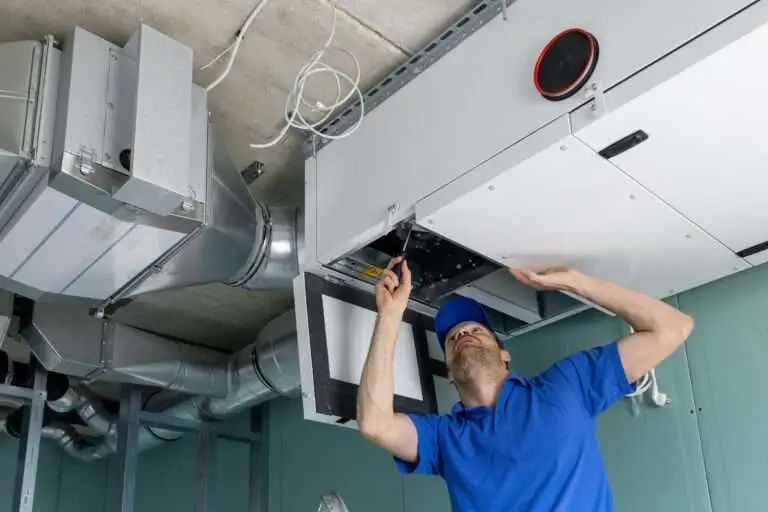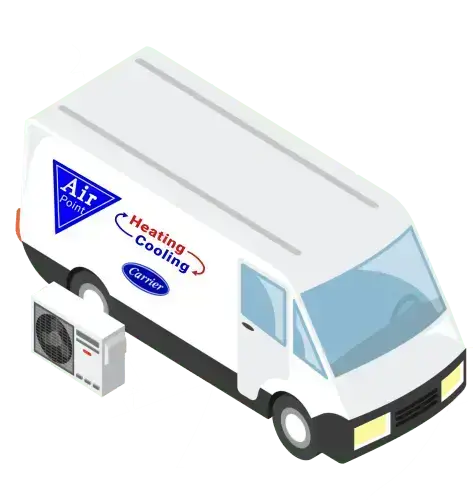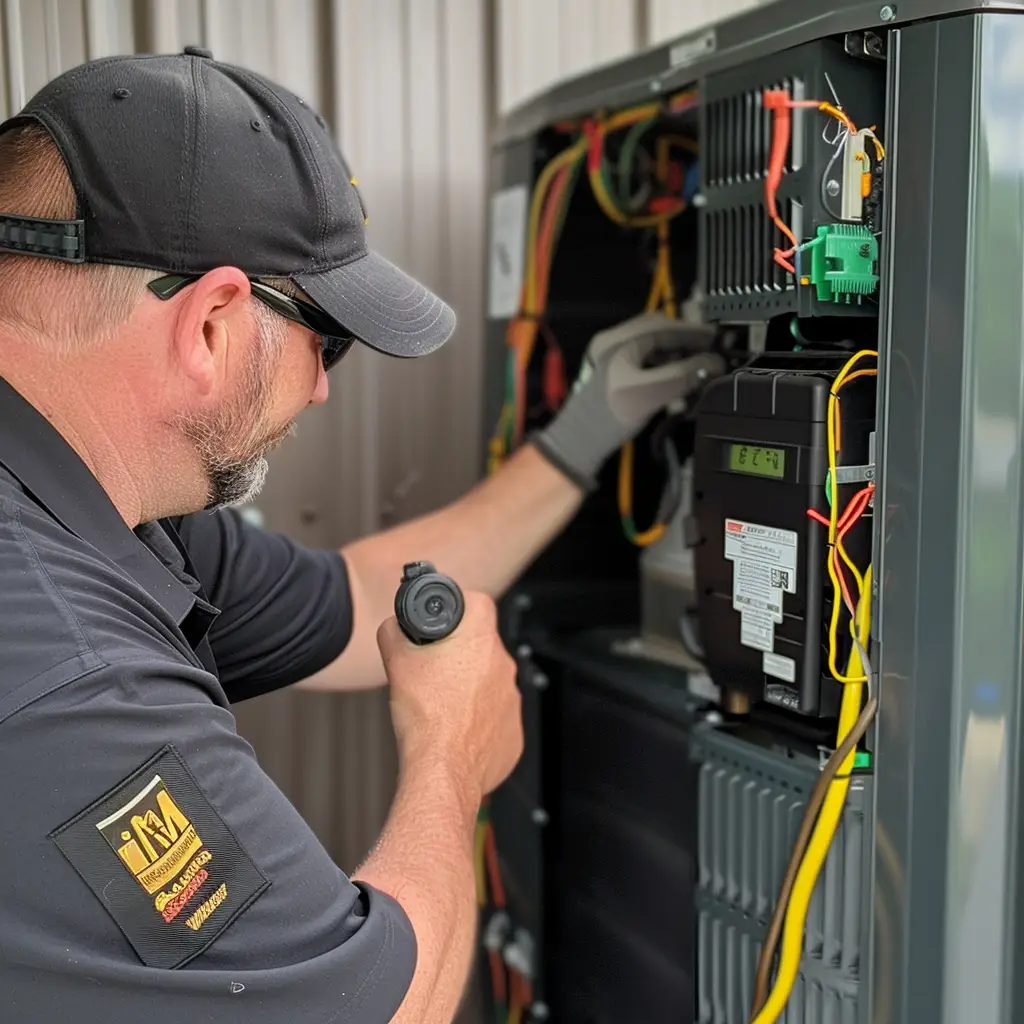ERV Systems: How They Work
An ERV (energy recovery ventilator) is a type of mechanical ventilation system that helps to exchange the air in a building while also recovering some of the energy from the outgoing air. Here’s how it works:
- The ERV system brings in fresh outdoor air and exhausts stale indoor air.
- As the outgoing indoor air passes through the ERV system, it transfers some of its heat or coolness to the incoming outdoor air. This helps to pre-condition the incoming air, making it more comfortable and reducing the workload on the building’s heating and cooling system.
- The ERV system also uses a moisture-transfer element to exchange moisture between the incoming and outgoing air streams. This helps to maintain a comfortable humidity level in the building.
What are the Benefits of Installing an ERV System?
Some of the benefits of an ERV system include:
Improved Air Quality
ERV (energy recovery ventilator) systems can improve indoor air quality in several ways:
- Fresh air exchange: ERV systems bring in fresh outdoor air and exhaust stale indoor air, which helps to improve the overall air quality in a building.
- Filtering: Some ERV systems have filters that remove pollutants and other contaminants from the incoming air, which can further improve indoor air quality.
- Humidity control: ERV systems use a moisture-transfer element to exchange moisture between the incoming and outgoing air streams, which helps to maintain a comfortable humidity level in the building. High humidity levels can promote the growth of mold and other allergens, which can be harmful to your health. By maintaining a comfortable humidity level, an ERV system can help to reduce the risk of respiratory issues and other health problems.
Energy efficiency
ERV (energy recovery ventilator) systems can improve energy efficiency in several ways:
- Heat and moisture transfer: ERV systems use a heat exchanger and a moisture-transfer element to exchange heat and moisture between the incoming and outgoing air streams. This helps to pre-condition the incoming air, which reduces the workload on the building’s heating and cooling system. By reducing the workload on the heating and cooling system, an ERV system can help to increase energy efficiency and lower energy costs.
- Energy recovery: ERV systems recover some of the energy from the outgoing air and use it to pre-condition the incoming air. This can help to further increase energy efficiency and lower energy costs.
- Energy-efficient operation: Many ERV systems have energy-efficient motors and other components that help to reduce energy consumption.
Comfort
ERV (energy recovery ventilator) systems can improve comfort in several ways:
- Fresh air exchange: By bringing in fresh outdoor air and removing stale indoor air, an ERV system can help to improve the overall air quality, which can enhance comfort.
- Temperature control: ERV systems use a heat exchanger to transfer heat between the incoming and outgoing air streams, which helps to pre-condition the incoming air and reduce the workload on the heating and cooling system. This can help to maintain a comfortable temperature in the building and improve overall comfort.
- Humidity control: ERV systems use a moisture-transfer element to exchange moisture between the incoming and outgoing air streams, which helps to maintain a comfortable humidity level . High humidity levels can make it feel hot and sticky, while low humidity levels can cause dryness and discomfort. By maintaining a comfortable humidity level, an ERV system can help to improve overall comfort.
Cost Savings
ERV (energy recovery ventilator) systems can improve cost savings in several ways:
- Energy efficiency: By increasing energy efficiency and reducing the workload on the heating and cooling system, an ERV system can help to lower energy costs and save money on utility bills.
- Maintenance and repair: ERV systems can be more reliable and require less maintenance than other types of ventilation systems, which can save money on repair and maintenance costs.
- Health and comfort: By improving indoor air quality and maintaining a comfortable temperature and humidity level, an ERV system can help to reduce the risk of respiratory issues and other health problems, which can save money on medical costs. In addition, by improving overall comfort, an ERV system can help to reduce absenteeism and increase productivity, which can also save money.
ERVs Enhance The Performance of HVAC Equipment
ERV (energy recovery ventilator) systems can improve HVAC (heating, ventilation, and air conditioning) equipment performance in several ways:
- Pre-conditioning: ERV systems use a heat exchanger to transfer heat between the incoming and outgoing air streams, which helps to pre-condition the incoming air and reduce the workload on the HVAC system. This can help to improve the efficiency of the HVAC equipment and extend its lifespan.
- Improved indoor air quality: By bringing in fresh outdoor air and removing stale indoor air, an ERV system can help to improve the overall air quality in a building, which can reduce the workload on the HVAC system.
- Humidity control: ERV systems use a moisture-transfer element to exchange moisture between the incoming and outgoing air streams, which helps to maintain a comfortable humidity level in the building. High humidity levels can increase the workload on the HVAC system, as it has to work harder to remove excess moisture from the air. By maintaining a comfortable humidity level, an ERV system can help to reduce the workload on the HVAC system and improve its performance.
ERVs Remove contaminants
ERV (energy recovery ventilator) systems can remove bad odors and contaminants in several ways:
- Fresh air exchange: By bringing in fresh outdoor air and removing stale indoor air, an ERV system can help to dilute and remove bad odors and contaminants that may be present in the indoor air.
- Filtering: Some ERV systems have filters that can remove pollutants and other contaminants from the incoming air. This can help to further improve indoor air quality and remove bad odors and contaminants from the air.
- Humidity control: High humidity levels can contribute to the growth of mold and other allergens, which can produce bad odors and be harmful to your health. By maintaining a comfortable humidity level, an ERV system can help to reduce the risk of mold growth and remove bad odors and contaminants from the air.
Do I need an ERV System in Toronto?
Whether or not you need an ERV (energy recovery ventilator) system in Toronto depends on a variety of factors, including the size and age of your home, your local climate, and your personal preferences. Here are some considerations to help you decide if an ERV system is right for you:
- Climate: In Toronto, the climate can be quite variable, with hot, humid summers and cold, dry winters. An ERV system can help to maintain a comfortable humidity level in your home, which can be especially beneficial during the summer months when humidity levels tend to be higher.
- Home size and age: If you have a larger home or an older home with outdated or inadequate ventilation, an ERV system can help to improve indoor air quality and increase energy efficiency.
- Personal preferences: If you are concerned about indoor air quality or want to improve the energy efficiency of your home, an ERV system can be a good investment.
Ultimately, the decision to install an ERV system in your Toronto home will depend on your specific needs and goals. It may be helpful to consult a professional to determine if an ERV system is the right choice for your home.
Overall, an ERV system can be an effective way to improve indoor air quality, increase energy efficiency, and enhance comfort in a building.
What is the Difference between ERV and HRV?
HRV (heat recovery ventilator) and ERV (energy recovery ventilator) systems are both types of mechanical ventilation systems that help to exchange the air in a building while also recovering some of the energy from the outgoing air. However, there are some differences between the two types of systems:
- Heat transfer: HRV systems use a heat exchanger to transfer heat between the incoming and outgoing air streams. This helps to pre-condition the incoming air and reduce the workload on the building’s heating and cooling system. ERV systems also use a heat exchanger to transfer heat, but they also use a moisture-transfer element to exchange moisture between the incoming and outgoing air streams. This helps to maintain a comfortable humidity level in the building.
- Energy recovery: Both HRV and ERV systems recover some of the energy from the outgoing air and use it to pre-condition the incoming air. However, ERV systems are generally more efficient at recovering energy from the outgoing air, as they can transfer both heat and moisture.
- Applications: HRV systems are typically used in colder climates where the main concern is heating, while ERV systems are more commonly used in warmer climates where the main concern is cooling and humidity control.
Overall, ERV systems can be effective at improving indoor air quality, increasing energy efficiency, and enhancing comfort in a building. The right choice for your home will depend on your specific needs and goals, as well as your local climate and other factors. It may be helpful to consult a professional to determine which type of system is the best fit for your home.





